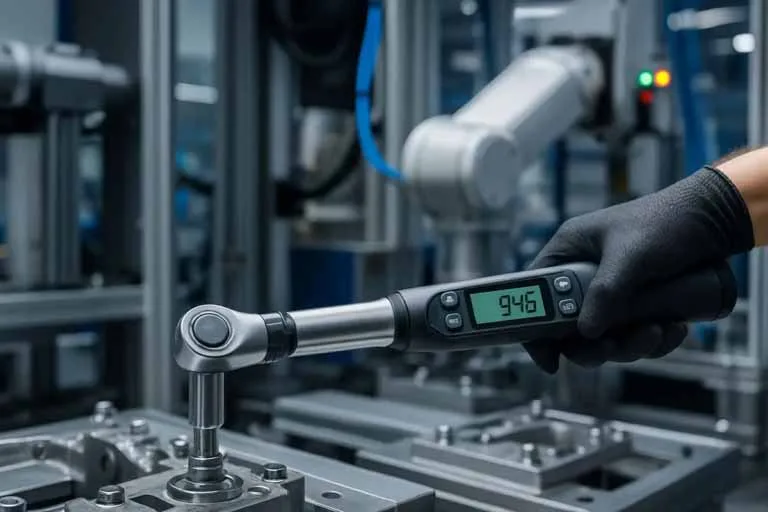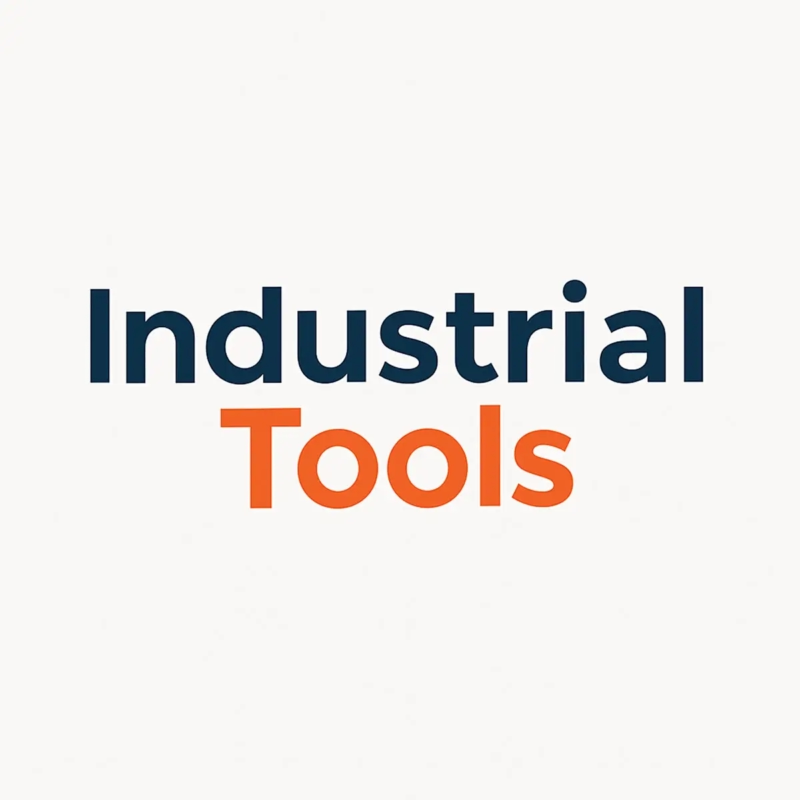Introduction: Why Torque Wrenches Are Entering the Smart Era
The future of Torque wrenches is knocking on the door! Torque wrenches have long been the silent heroes of precision engineering. From automotive assembly to aerospace manufacturing, these essential tools ensure that bolts are tightened just right—not too loose, not over-torqued. However, as industries demand more speed, safety, and data traceability, traditional torque tools are getting a futuristic upgrade.
Enter the smart torque wrench.
These intelligent devices are not just about applying torque—they’re about monitoring, measuring, and reporting it in real-time. With automation and Industry 4.0 integration leading the charge, torque wrenches are quickly evolving from analog hand tools into digital data powerhouses.
So what does the future hold for torque tools? Let’s find out.
What Is a Smart Torque Wrench?
A smart torque wrench is a digitally enhanced tool designed to measure and apply torque with high precision while providing real-time data feedback through sensors, displays, or wireless connections.
✅ Key Features:
- Digital Torque Display: Shows applied torque instantly.
- Data Logging: Stores torque data for quality control and compliance.
- Bluetooth/Wi-Fi Connectivity: Syncs with mobile apps or central systems.
- Audible/Visual Alerts: Notifies users when torque target is reached.
- Auto Calibration Alerts: Ensures tool is always within spec.
These features not only increase efficiency, but they also help reduce human error, boost product traceability, and improve safety compliance—critical in today’s regulated industries.
Why Smart Torque Wrenches Are the Future of Assembly Lines?
1. Industry 4.0 Integration
With manufacturing going digital, torque wrenches are no longer just mechanical instruments. They’re now nodes in the Internet of Things (IoT). This means they can:
- Transmit data directly to cloud systems.
- Link to torque control software (MES/ERP).
- Support predictive maintenance planning.
- Enable remote diagnostics and firmware updates.
In short, they’re becoming team players in smart factories.
2. Automation-Ready
Some smart torque tools can be integrated into robotic arms or automated tightening stations, reducing labor time and ensuring repeatable results.
They also provide feedback that can trigger automated line adjustments, helping you catch errors before they become costly defects.
3. Fool-Proof Operations
Modern torque wrenches offer error-proofing features, like:
- Lock-out if previous step was skipped.
- Barcode/RFID scanning for job validation.
- Torque angle monitoring for improved joint analysis.
This is a game-changer for industries where precision equals safety, such as aerospace and automotive.
Pros and Cons: Are Smart Torque Wrenches Worth It?
| Pros | Cons |
|---|---|
| High precision and repeatability | Higher initial cost |
| Real-time data feedback | Requires training |
| Improved traceability | May need regular software updates |
| Integration with MES/ERP systems | Potential data security concerns |
| Error-proof tightening | Battery-dependent (in some models) |
👉 Bottom line: The investment is often justified by reduced rework, improved safety, and better quality control.
Interesting Fact:
The torque wrench was invented in 1918 by Conrad Bahr to prevent over-tightening bolts on water mains. More than 100 years later, his idea is powering space missions—now with a touchscreen!
Lesser-Known Fact:
Some high-end smart torque wrenches include gyroscopic sensors to detect tool orientation—ensuring not only torque but angle accuracy for critical applications like aircraft turbine maintenance.
Top Smart Torque Wrench Models in 2025
Here are a few of the smartest players in the game:
🔧 1. Stahlwille Manoskop 766 DAPTIQ
- Torque range: 20–400 Nm
- Connectivity: Wireless (Daptiq system)
- Highlights: Real-time process control, robust metal body, certified for aviation use.
🔧 2. Norbar EvoTorque2
- Torque range: 100–2000 Nm
- Connectivity: USB & Bluetooth
- Highlights: Easy data export, dual trigger, audit-ready logs.
🔧 3. GEDORE E-torc Q
- Torque range: 60–1000 Nm
- Connectivity: Wi-Fi & app integration
- Highlights: Programmable sequences, OLED screen, ergonomic grip.
These tools are built for accuracy, durability, and data integration, helping modern factories meet demanding ISO and DIN standards.
Technical Specifications to Consider
When choosing a smart torque wrench, compare the following specs:
- Torque Range: Match your application’s needs (e.g., 5–500 Nm).
- Accuracy: ±1–2% is the industry standard.
- Display Type: LED, OLED, or LCD.
- Data Interface: USB, Bluetooth, or wireless LAN.
- Battery Life: Rechargeable lithium-ion or replaceable AA.
- Compliance: ISO 6789, ASME B107.300, CE marking.
Transitioning from analog to digital? It’s easier than you think—but double-check compatibility with your existing tools and workflow.
The Future of Torque Wrenches FAQ
Final Thoughts: Is the Smart Torque Wrench Revolution for You?
As technology continues to evolve, torque wrenches are no longer stuck in the analog world. Today, smart torque tools are at the heart of industrial automation, helping businesses boost efficiency, ensure compliance, and stay competitive in a rapidly digitizing world.
Yes, the upfront costs are higher. But the long-term benefits—better data, fewer errors, and higher product quality—make it a worthy investment for serious professionals and industries alike.
Whether you’re running a high-volume automotive line or tightening turbine blades on an aircraft engine, the future of torque tightening is smart, connected, and automated.
Want To Learn More About Torque Wrench?
Find out more information on torque wrenches in the following articles:
- The Ultimate Guide to Torque Wrenches
- How to Use a Torque Wrench in the Automotive Industry
- Automotive Torque Wrench Buying Guide 2025
- Digital vs. Mechanical Torque Wrenches: Which Is Better?
- Best Digital Torque Wrench in 2025
- How to Calibrate a Torque Wrench: Step-by-Step Guide
- Top Torque Wrench Manufacturers Reviewed (2025 Edition)
- How to Set Up a Torque Wrench Correctly (Step‑by‑Step)
- How to Read a Torque Wrench Correctly?
- Torque Wrench Maintenance: How to Extend Its Life
- 5 Common Mistakes When Using a Torque Wrench
- Torque Wrenches in Aviation – Case Studies on Safety
- Torque Wrench Safety: Prevent Overtightening & Bolt Failures
- Torque Wrench Accuracy Explained | Understanding Tolerance in Practice
- Digital Torque Wrench Calibration – Step-by-Step Guide 2025
- Snap-On Digital Torque Wrenches (2025) – Premium Review
- Proto Torque Wrenches: Complete Buying Guide & Pro Review (2025 Edition)
- How to Choose the Right Torque Wrench for Your Job
- Best Smart Tightening Tools for Industrial Assembly (2026 Guide)
What Do You Think?
Have you used a smart torque wrench on the job?
What are your favorite models or features?
Would you trust a torque tool that’s smarter than your apprentice?
Drop your thoughts in the comments below—we’d love to hear your real-world experiences.
And don’t forget to share this post on social media if you found it helpful!





